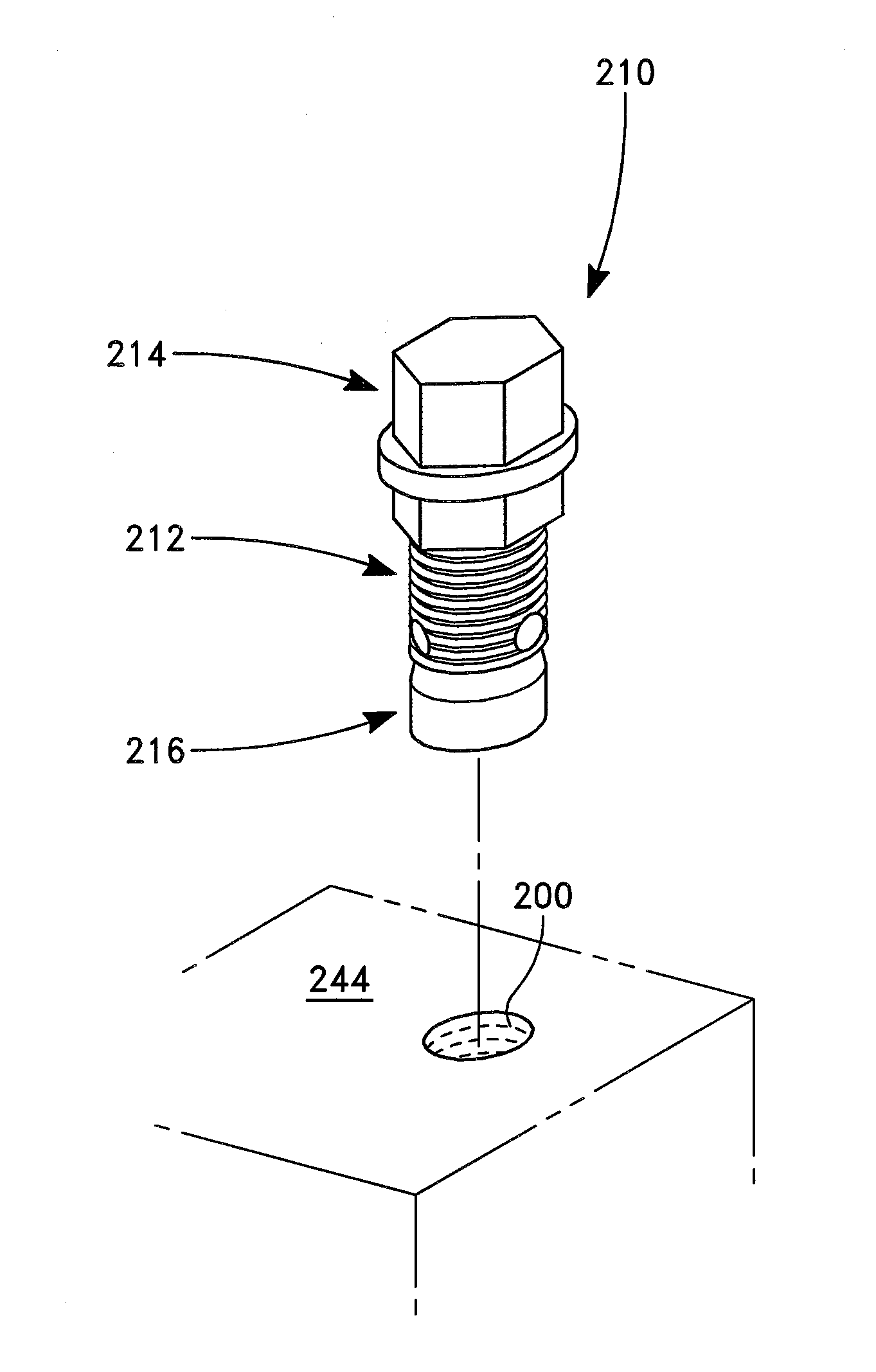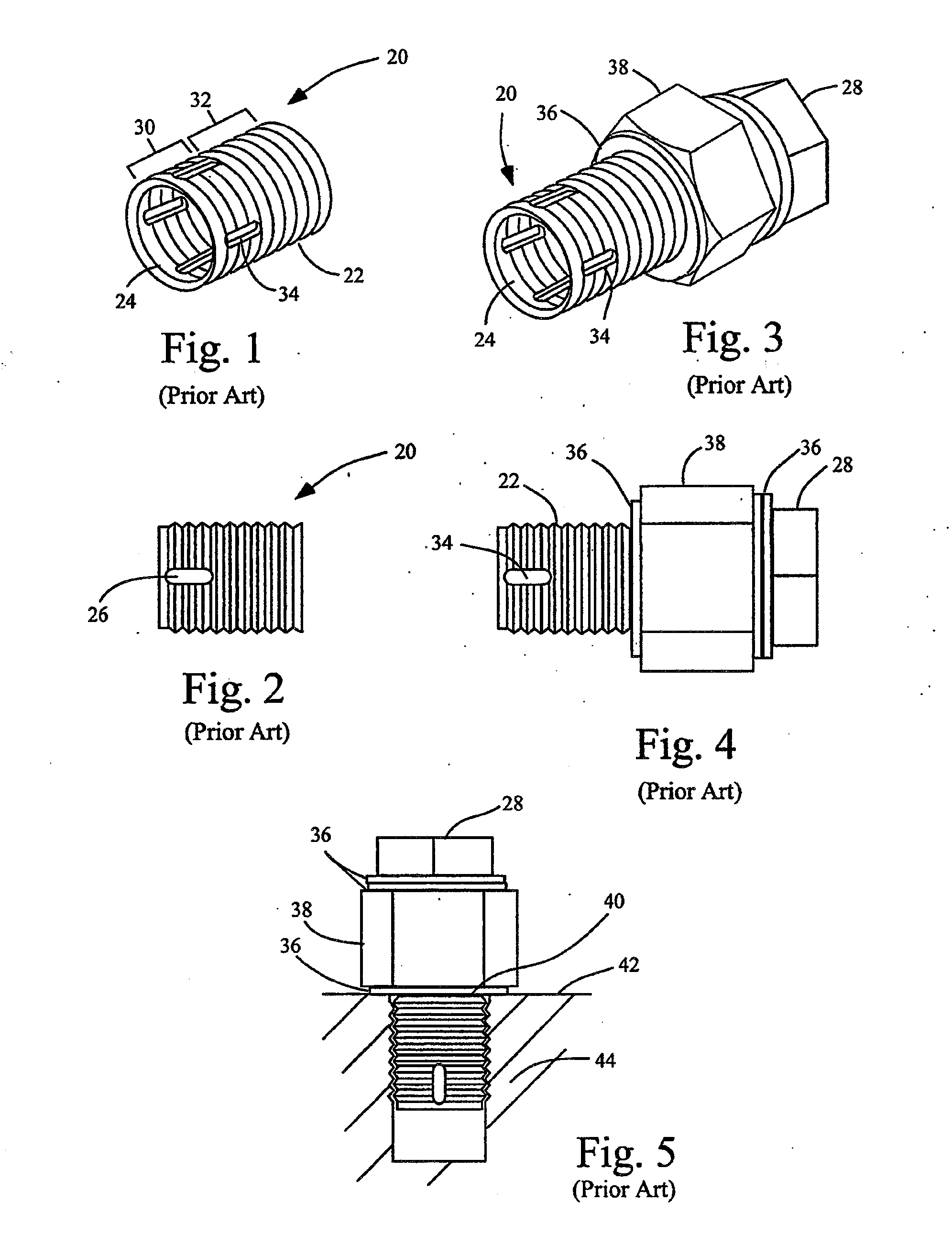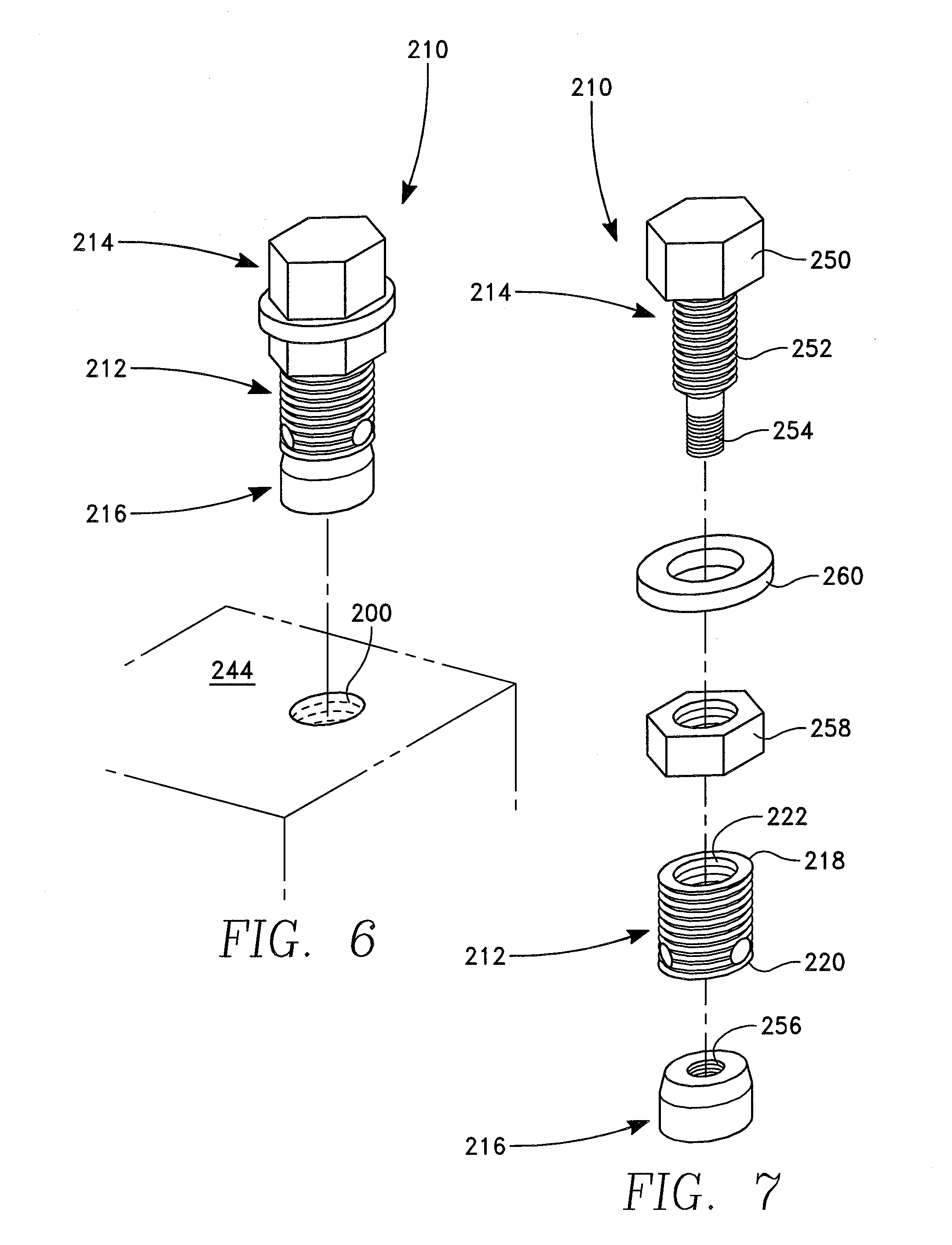Self-Tapping and Self-Aligning Insert to Replace Damaged Threads
a self-tapping, insert technology, applied in the direction of threaded fasteners, screws, fastening means, etc., can solve the problems of thread damage, thread replacement, and change in the size of the original fastener, so as to increase the effective length of the self-tapping insert, reduce the angle of deflection, and increase the effective length of the insert.
- Summary
- Abstract
- Description
- Claims
- Application Information
AI Technical Summary
Benefits of technology
Problems solved by technology
Method used
Image
Examples
Embodiment Construction
[0029]When the threads of a workpiece cannot be repaired by chasing the damaged thread with a tap to restore the original thread shape, replacement of the threads with a self-tapping insert provides an alternative method of repair. The pilot hole is usually made by drilling out the damaged threads to form a smooth walled bore hole in the base metal, and the prior art insert is placed within the bore hole.
[0030]Referring now specifically to the drawings, FIGS. 1 through 4 show a prior art self-tapping insert 20, which is a hardened steel cylinder, threaded on the exterior and interior. The prior art insert 20 comprises external threads 22, internal threads 24 and apertures 26. The prior art self-tapping insert 20 is generally installed with drive bolt 28 which makes up into internal threads 24 of the insert. The diameter and pitch of interior threads 24 are those of the fastener to be installed. The exterior of the self-tapping insert 20 comprises a first section 30 which cuts new th...
PUM
| Property | Measurement | Unit |
|---|---|---|
| diameter | aaaaa | aaaaa |
| diameter | aaaaa | aaaaa |
| length | aaaaa | aaaaa |
Abstract
Description
Claims
Application Information
 Login to View More
Login to View More - R&D
- Intellectual Property
- Life Sciences
- Materials
- Tech Scout
- Unparalleled Data Quality
- Higher Quality Content
- 60% Fewer Hallucinations
Browse by: Latest US Patents, China's latest patents, Technical Efficacy Thesaurus, Application Domain, Technology Topic, Popular Technical Reports.
© 2025 PatSnap. All rights reserved.Legal|Privacy policy|Modern Slavery Act Transparency Statement|Sitemap|About US| Contact US: help@patsnap.com



